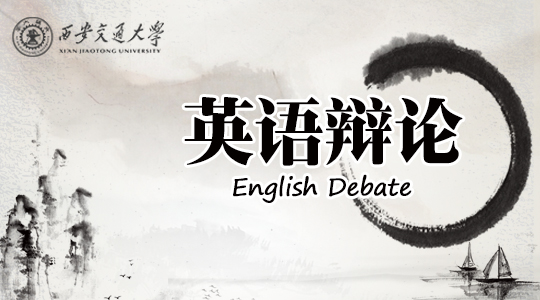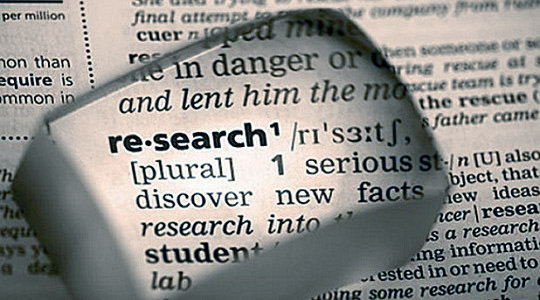
当前课程知识点:Western and Chinese Art: Masters and Classics > 5.Grief and Transcendence: Wang Xizhi and Gu Kaizhi > 5.7Gu Kaizhi and his painting > Gu Kaizhi and his painting
返回《Western and Chinese Art: Masters and Classics》慕课在线视频课程列表
返回《Western and Chinese Art: Masters and Classics》慕课在线视频列表
在魏晋时代
最伟大的画家也许要推顾恺之
顾恺之在中国绘画史上的意义
可以说他是承前启后的
一个伟大的开拓者
他的生平我们知道的并不很多
但是呢关于他有三绝之说
所谓三绝就是说顾恺之的画绝
他的才绝
他也是痴绝
所谓画绝当然就是说
他的绘画具有极高成就
而才绝呢
当然就是说他才华过人
痴绝是指顾恺之在现实生活当中
表现出一种与众不同的情趣和品格
他最典型的有这么两个故事
值得我们讲一讲
一个故事是讲
他爱慕邻居的女儿
但这个女孩并不钟情于他
所以他就画了一幅这个女孩的肖像
然后呢用尖针扎在
这个肖像的心脏部位
据说这个女孩就害心痛病
后来经人劝说
顾恺之拔掉了画上的尖针
女孩的心痛病才得以解除
他痴绝另外一个故事是说
他有一位好友
叫桓玄
一次他要外出
他就把他的绘画作品收藏在
一个箱子里面
锁好以后呢交给桓玄保管
他外出回来之后
桓玄把箱子送还
结果顾恺之打开箱子
里面所有的画都不翼而飞
那么顾恺之见到这样一个情景
并没有生气
更没有责怪朋友桓玄
而是说 画妙通神
变化飞去
犹人之登仙也
顾恺之的意思就是讲
他的绘画太绝了
绝到了练神成仙的地步
在了解这两个故事之后
其实也就是我们对顾恺之的
性情大概了解之后
我们来进入到他的绘画世界
顾恺之是一个既有创作
也有理论的古代画家
关于绘画他有两个命题
一个命题是 迁想妙得
他说凡画人最难
次山水
次狗马
台榭一定器耳
难成而易好
不待迁想
妙得也
此以巧歴不能
差其品也
顾恺之这段话的意思是指
绘画最需要的
最显示技巧的是对描绘的对象
当然他主要是指人
要有想象力
而且要迁想妙得
所谓迁想妙得
就是你的想象力要充分发挥
达到最高程度的创造性
他认为这是画人物必须的一个前提
他的另外一个命题是 传神写照
《世说新语》这样记载
顾长康画人
或数年不点目精
人问其故
顾曰
四体妍蚩
本无关于妙处
传神写照
正在阿堵中
所谓四体
就是指四肢
妍蚩也就是美丑
顾恺之认为画人物关键
不在于四肢如何
而在于要传神写照
所谓传神写照就是要表现人物的
内在生命及精神意气
他说人物的内在生命和
精神意气的关键点在哪里
在阿堵
阿堵就是指眼睛
所以他不画眼睛就是
因为眼睛太重要了
不轻易画
顾恺之提出的 迁想妙得
和 传神写照
这两个命题联系起来
就是指在人物画的创作中
画家应当超越直观所见
超越人的有限形体和面貌
去创造性的把握和
表现人物的生气精神
由此出发
我们来欣赏顾恺之的作品
我们就会发现
顾恺之所创造的人物画的记法
和西方人物画的传统
有一个很大的区别
就是他重神 不重形
重视的是人物的精神风貌
和神态气质的捕捉和表现
而不是人物的形体 面貌的模仿
你比如说
我们现在看顾恺之的
《女史箴图》的一个片断
在这幅画上看到三位侍女
她们着着长长的衣衫
这是衣衫的线纹飘逸飞动
犹如轻风吹扬的云衣
画面上的这三位女子
我们虽然看不清她们的面目
对她们的四肢 也难以确定的把握
但是我们却会强烈的
感受到她们飘飘欲仙
优雅飘逸的神态
从中我们可以想象到
她们在现实中可能是
多么的美丽优雅
妩媚动人
这就是顾恺之所说的 迁想妙得
传神写照
顾恺之作为中国人物画传统的
伟大的确立者之一
他发明了一种特殊的人物线描手法
这就是我们常说的 春蚕游丝描(一说春蚕吐丝描)
有时也把它称为铁线描
这种线描的主要特点是
线条粗细基本一致
就犹如铁丝一样
而且这些线条绵长飘逸
就如蚕丝一样
这种 春蚕游丝描 的描绘
其实它和魏晋文化所追寻的那种
清新旷远的道家意境是相联系的
我们现在给同学们介绍顾恺之的
另外一个代表作《洛神赋图》
《洛神赋图》是以曹植的
洛神赋诗为题材创作的
这是一幅长卷连环画式的作品
在《洛神赋图》当中
顾恺之非常精彩的描绘了
曹植与洛神在洛河边相遇
又相别的情景
这幅作品向我们充分表现了
顾恺之的绘画理想
就是他所说的迁想妙得和传神写照
所以在这幅画当中
与其说我们看到了
具体的花草 人物 水流
还不如说我们看到的是
顾恺之通过他伟大的想象力
向我们展现的一幅神仙世界
-1.1Factual impairment between image and message
--Factual impairment between image and message
-1.2Relationship between Fact and Truth
--Relationship between Fact and Truth
-1.3The image revelry in the information age
--The image revelry in the information age
-1.4 Nature, animal and human body art
--Nature, animal and human body art
-1.5 Art: from concrete bodies to metaphorical constructions
--Art: from concrete bodies to metaphorical constructions
-1.6 On defining art
-1.7 Globalization and Consumerism
--Globalization and Consumerism
-1.8 Art and Anti-art
-1.9The value classics hold to the modern time
--The value classics hold to the modern time
-Homework1
-2.1 The occurrence of prehistoric art
--The occurrence of prehistoric art
-2.2 Mysterious cave mural paintings
--Mysterious cave mural paintings
-2.3 Symbolism of rock engravings
--Symbolism of rock engravings
-2.4 Expressive functions about prehistoric painting
--Expressive functions about prehistoric painting
-2.5 Aesthetic characters of prehistoric art
--Aesthetic characters of prehistoric art
-2.6 The tribal art of bodily operation
--The tribal art of bodily operation
-2.7 The construction to reach the heaven
--The construction to reach the heaven
-2.8 Immortal art in ancient Egyptian
-- Immortal art in ancient Egyptian
-Homework2
-3.1 The relationship between mythology and Greek culture
--The relationship between mythology and Greek culture
-3.2 The marks of the epics written by Homer
--The marks of the epics written by Homer
-3.3 Three greatest tragedy drammatists in Greece
--Three greatest tragedy drammatists in Greece
-3.4 The aesthetics woven into ancient Greek architecture
--The aesthetics woven into ancient Greek architecture
-3.5 The ancient Greek sculpture
-3.6 The Greek sculpture of the classic age
--The Greek sculpture of the classic age
-3.7 Works of Phidias
-3.8 The essence and verve of ancient Greek classical art
--The essence and verve of ancient Greek classical art
-Homework3
-4.1The beginning of Chinese painting and Calligraphy
--The beginning of Chinese painting and Calligraphy
-4.2 Majesty and divinity from bronze ware
--Majesty and divinity from bronze ware
-4.3 The Duke Mao Tripod and eternal characters
--The Duke Mao Tripod and eternal characters
-4.4The Philosophy of Chuang Tzu
--The Philosophy of Chuang Tzu
-4.5Qin Shi Huang’s Terracotta Warriors
--Qin Shi Huang’s Terracotta Warriors
-4.6The painting in the Han Dynasty
--The painting in the Han Dynasty
-4.7 The sculpture in the Han Dynasty
--The sculpture in the Han Dynasty
-Homework4
-5.1Master Chuang Tzu's impact on the Wei and Jin Dynasties
--Master Chuang Tzu's impact on the Wei and Jin Dynasties
-5.2Talking about Ji Kang
-5.3 The general spirit of the Wei and Jin Dynasties
--The general spirit of the Wei and Jin Dynasties
-5.4 Wang Xizhi and his unrivalled attainment in calligraphy
--Wang Xizhi and his unrivalled attainment in calligraphy
-5.5 A Preface to the Orchid Pavilion
-- A Preface to the Orchid Pavilion
-5.6 The penmanship of two famous calligraphers surnamed Wang
--The penmanship of two famous calligraphers surnamed Wang
-5.7Gu Kaizhi and his painting
-5.8 Great poet Tao Yuanming
-Homework5
-6.1The Chan School in the Tang dynasty
--The Chan School in the Tang dynasty
-6.2“Cursive King”: Zhang Xu
-6.3《Four Calligraphy Works of Ancient Poems》
--《Four Calligraphy Works of Ancient Poems》
-6.4Zhang Xu and Huai Su
-6.5Wu Daozi and his paintings
-6.6Wang Wei and Chinese landscape painting
--Wang Wei and Chinese landscape painting
-6.7The relation of painting and poetry
--The relation of painting and poetry
-Homework6
-7.1 The beginning of Renaissance: Giotto
--The beginning of Renaissance: Giotto
-7.2 Giotto’s naturalism
-7.3 The frescoes in the Arenal Chapel
--The frescoes in the Arenal Chapel
-7.4 The Renaissance artist in north Europe: Robert Campin
--The Renaissance artist in north Europe: Robert Campin
-7.5 The Ghent Altarpiece
-7.6 Jan Van Eyck’s secular paintings
-- Jan Van Eyck’s secular paintings
-Homework7
-8.1 The beauty of dawn during Renaissance
--The beauty of dawn during Renaissance
-8.2 The reproducer of nature: Da Vinci
--The reproducer of nature: Da Vinci
-8.3 The immortal work Mona Lisa
-8.4 The classicism of Raphael
-8.5 The Sistine Chapel ceiling
-8.6 The mythology and sculpture of Moses
--The mythology and sculpture of Moses
-8.7 Michelangelo's struggle between life and death
-- Michelangelo's struggle between life and death
-8.8 The perceptual Titian and Venice
--The perceptual Titian and Venice
-Homework8
-9.1Rubens and the Baroque Art
-9.2Poussin and his classical spirit
--Poussin and his classical spirit
-9.3Rembrandt and his aptitude of wielding light and shadow
--Rembrandt and his aptitude of wielding light and shadow
-9.4 Rembrandt in his self-portrait
--Rembrandt in his self-portrait
-9.5 Vermeer and his painting
-Homework9
-10.1Landscape painting from the Five Dynasties period to the Northern Song Dynasty
--Landscape painting from the Five Dynasties period to the Northern Song Dynasty
-10.2 Creating painting out of poetry by Emperor Huizong of Song
--Creating painting out of poetry by Emperor Huizong of Song
-10.3 Viewing the small through the large
--Viewing the small through the large
-10.4 Combining the tangible with the intangible
--Combining the tangible with the intangible
-10.5 The atmosphere of freedom, detachedness and ease of landscape painting
-- The atmosphere of freedom, detachedness and ease of landscape painting
-10.6 Dwelling in the Fuchun Mountains
--Dwelling in the Fuchun Mountains
-10.7 Friendliness in Ni Zan’s painting
--Friendliness in Ni Zan’s painting
-10.8 A pristine and boundless world in Ni Zan’s painting
--A pristine and boundless world in Ni Zan’s painting
-Homework10
-11.1The origin and expression of the madman culture
--The origin and expression of the madman culture
-11.2 The madman Li Zhi
-11.3 Xu Wei: from gifted scholar to mad man
--Xu Wei: from gifted scholar to mad man
-11.4 The aesthetic ideology of Xu Wei
--The aesthetic ideology of Xu Wei
-11.5 Xu Wei’s notions and theories on painting practise
--Xu Wei’s notions and theories on painting practise
-11.6 Miscellaneous Plants and Flowers
--Miscellaneous Plants and Flowers
-11.7 Drunkenness in Xu Wei's art
-Homework11
-12.1 Winckelmann
-12.2 Neoclassical master: David
-12.3 The Death of Marat
-12.4 The Intervention of the Sabine Women
--The Intervention of the Sabine Women
-12.5 The aestheticism works by Ingres
--The aestheticism works by Ingres
-12.6 The contrast between photography and paintings
--The contrast between photography and paintings
-12.7 Courbet and realism
-Homework12
-13.1 Rousseau and emotionalism
-13.2 Kant's view about the beautiful and the sublime
--Kant's view about the beautiful and the sublime
-13.3 Goethe, from Werther to Faust
--Goethe, from Werther to Faust
-13.4 Byron, romantic hero
-13.5 The painting laws of Romanticism
--The painting laws of Romanticism
-13.6 John Constable
-13.7 The world of Turner
-Homework13
-14.1 Western modernism and Rodin
-14.2 The Gates of Hell
-14.3 Painting conception of Manet
--Painting conception of Manet
-14.4 Impressionism of Monet
-14.5 Cezanne:the Father of the art of modernism
--Cezanne:the Father of the art of modernism
-14.6 Van Gogh:painting and life
-14.7 The art value of Van Gogh
-Homework14
-15.1 art modernism
-15.2 porcelain urinal of Marcel Duchamp
--porcelain urinal of Marcel Duchamp
-15.3 This is not a pipe
-15.4 The great innovation artist: Picasso
--The great innovation artist: Picasso
-15.5 the infinity of art
-15.6 the art after Andy Warhol
-Homework15
-Final exam


